Plomesgate, Suffolk
Up to 1834
Under the terms of the will of Sir Robert Hitcham (1572-1636), who owned Framlingham Castle, a workhouse was built at the site in 1664. It was a non-residential establishment, with paid work such as combing, spinning and weaving wool being provided there each day for the parish poor. The building, which was constructed in brick, became known as the Red House.
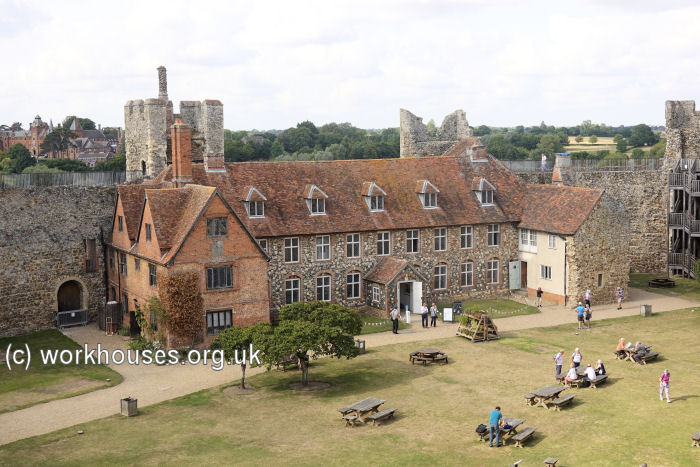
Former Framlingham workhouse from the south-east, 2021.
© Peter Higginbotham.
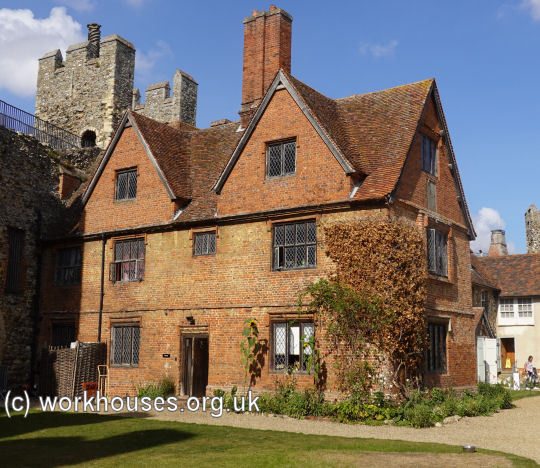
Former Framlingham workhouse, the Red House from the south-east, 2021.
© Peter Higginbotham.
Part of the surviving north range of the castle was also used as accommodation for the workmaster John Kilbourne, alongside the schoolmaster Zaccheus Leverland, and the schoolroom — a separate institution that was also established under Hitcham's will. That block later became known as the White House.
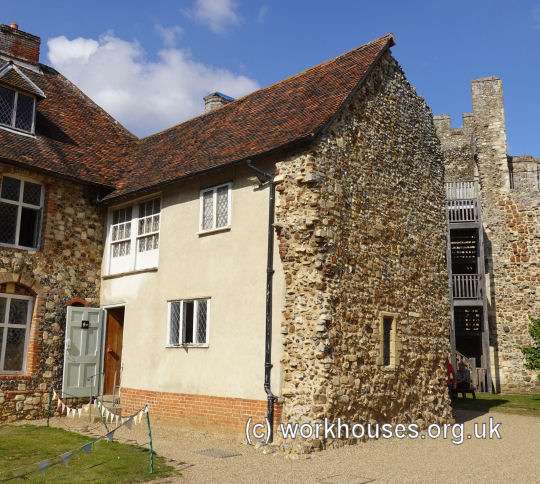
Former Framlingham workhouse, the White House from the south-east, 2021.
© Peter Higginbotham.
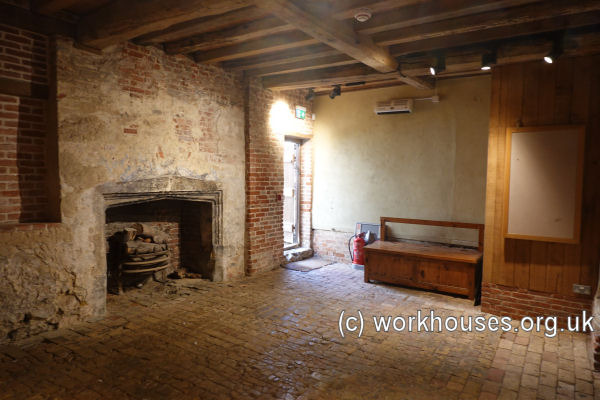
Former Framlingham workhouse, White House interior, 2021.
© Peter Higginbotham.
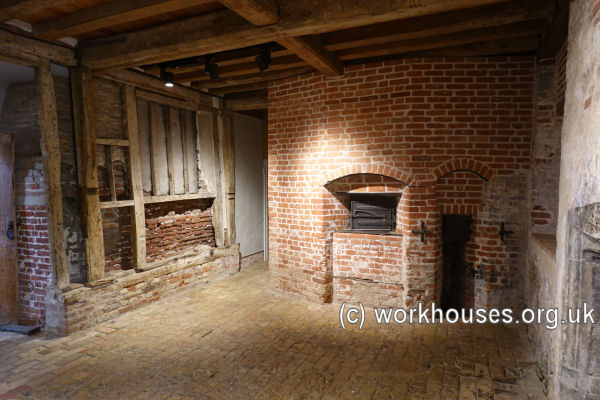
Former Framlingham workhouse, White House interior, 2021.
© Peter Higginbotham.
After being used as a pest house, or isolation hospital, during the plague of 1666, the workhouse fell into disuse but was revived in 1700 as a residential establishment for ten poor children. In 1708, it was decided to admit adults were admitted adults instead of children. The children were to be "Clothed in Blew with Bonnetts &c. as at Christ Church hospital, Ipswich & have Sr Roberts Arms upon their Coat's".
In 1729, the parish instigated the construction of a new workhouse, linked to the White House at the north and Red House at the south, the whole forming a shallow U-shape. However, it not until 1797 that the whole of White House was absorbed into workhouse, with part of ground floor becoming a bakehouse. The Red House became integrated into the workhouse in 1813.
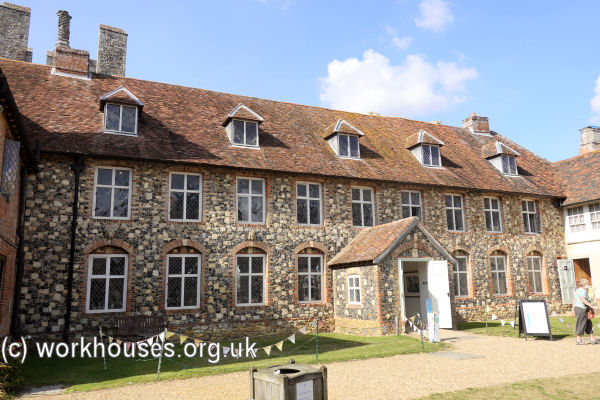
Former Framlingham workhouse, 1729 block from the south-east, 2021.
© Peter Higginbotham.
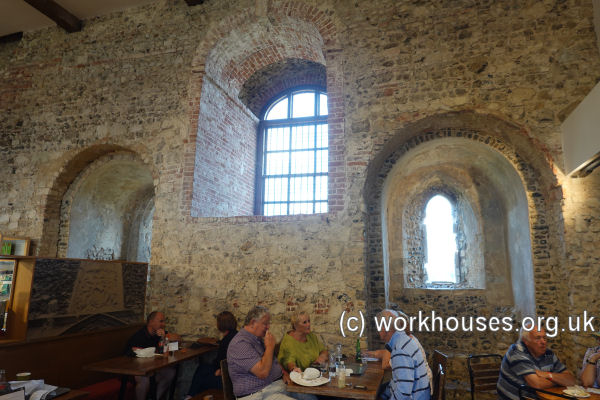
Former Framlingham workhouse, 1729 block interior, 2021.
© Peter Higginbotham.
The 1729 block had a small room, sometimes referred to as the 'dungeon', in which misbehaving inmates were placed in solitary confinement for a short period.
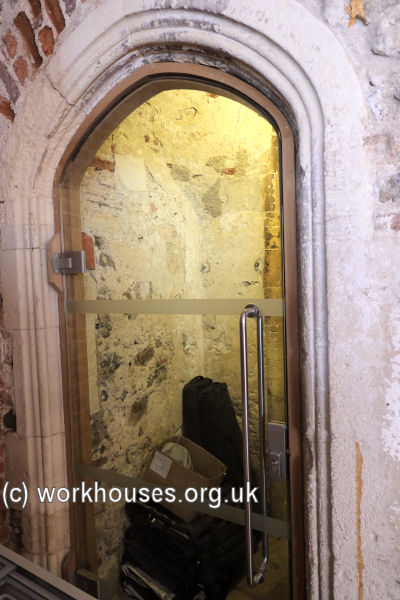
Former Framlingham workhouse, 1729 block 'dungeon', 2021.
© Peter Higginbotham.
In 1776, the Framlingham building could house up to 100 inmates, making it one of the largest parish workhouses in Suffolk. However, it was frequently less than half full. The workhouse building now houses the castle's visitor centre. The Red House is one of the oldest surviving purpose-built workhouses in England.
A Parliamentary report of 1777 also recorded parish workhouses in operation at Aldeburgh (for up to 15 inmates), Farnham (6), Orford (20), Saxmundham (60), Snape (20), and Sudbourn (30).
Saxmundham's workhouse was located at the west of the town, at the north side of what is now Rendham Road. The building survived into the mid-twentieth century but modern housing now occupies the site. Its location is shown on the 1884 map below.
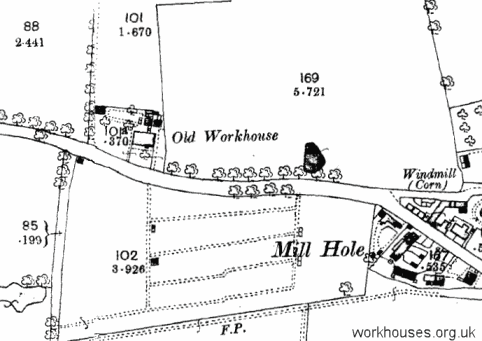
Saxmundham parish workhouse site, 1884.
Snape had a workhouse at the western end of Wadd Lane near Gromford.
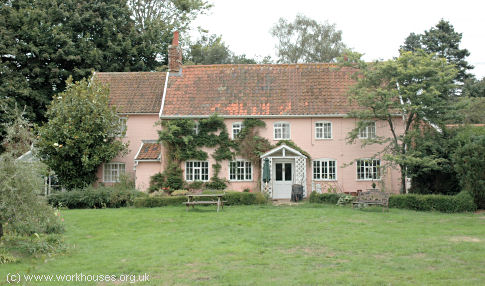
Snape former parish workhouse, 2006.
© Peter Higginbotham.
Friston opened a workhouse in the latter part of the eighteenth century, on what is now Workhouse Lane — a track leading to Meadow Farm (formerly Workhouse Farm).
Parham once had a workhouse at North Green, where the North Green Bungalows now stand.
After 1834
Plomesgate Poor Law Union officially came into existence on 30th December, 1835. Its operation was overseen by an elected Board of Guardians, 41 in number, representing its 40 constituent parishes as listed below (figures in brackets indicate numbers of Guardians if more than one):
County of Suffolk: Aldeburgh, Benhall, Blaxhall, Brandeston, Bruisyard, Butley, Campsea Ash, Chillesford, Cransford, Cretingham, Earlsoham, Easton, Eyke, Farnham, Framlingham (2), Friston, Great Glemham, Little Glemham, Hacheston, Haslewood, Hoo, Iken, Kenton, Kettleburgh, Letheringham, Marlesford, Monewden, Orford, Parham, Rendham, Rendlesham, Saxmundham, Snape, Sternfield, Stratford St Andrew, Sudborne [Sudbourne], Swefling, Tunstall, Wantisden, Wickham Market.
The population falling within the union at the 1831 census had been 20,703 with parishes ranging in size from Haslewood (population 90) to Framlingham (2,445). The average annual poor-rate expenditure for the period 1833-35 had been £19,947 or 19s.3d. per head of the population.
Initially, the union made use of the existing parish workhouses at Framlingham and Parham. A new Plomesgate Union workhouse was built in 1836-7 at Wickham Market. Its construction cost about £7,000 and it could accommodate 400 inmates. The building, constructed of red brick in an Elizabethan style, was designed by John Brown who was also the architect of the Mutford and Lothingland union workhouse at Oulton. His design for the Plomesgate Union used the relatively uncommon double-cruciform layout. The workhouse location and layout are shown on the 1902 map below.
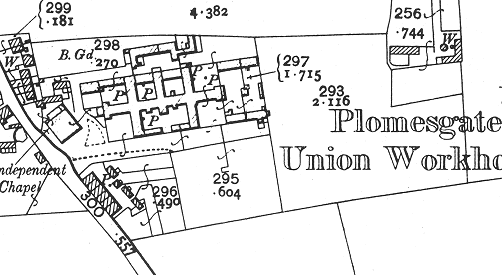
Plomesgate workhouse site, 1902.
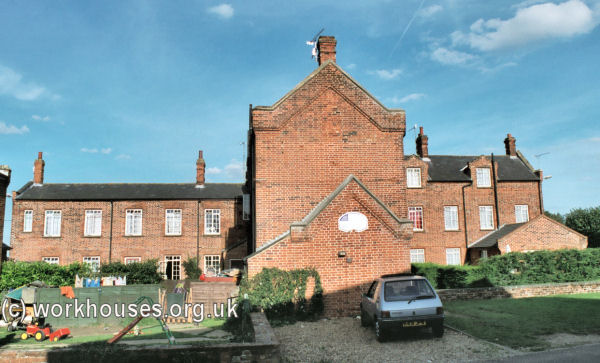
Plomesgate from the west, 2001.
© Peter Higginbotham.
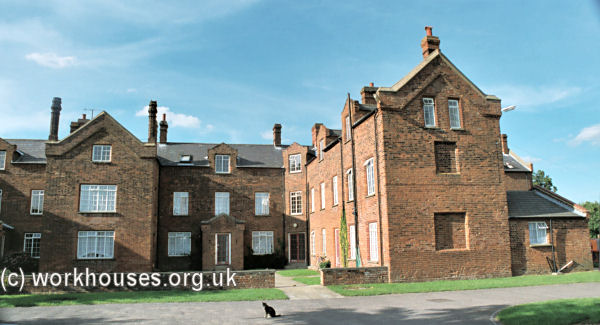
Plomesgate from the south, 2001.
© Peter Higginbotham.
A detached infirmary stood at the south-east of the site. It was extended at its eastern end in 1906.
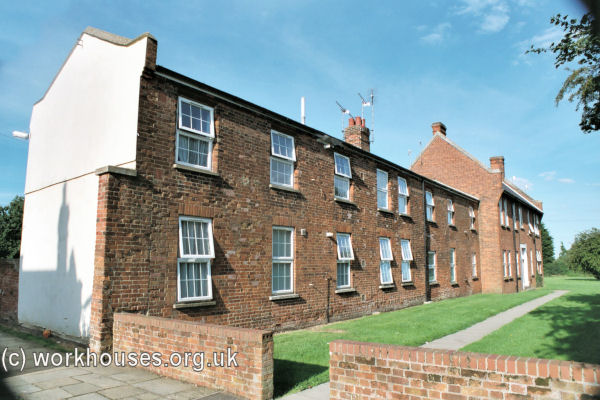
Plomesgate infirmary block from the south-west, 2001.
© Peter Higginbotham.
The workhouse Master's house stood at the north-west of the site.
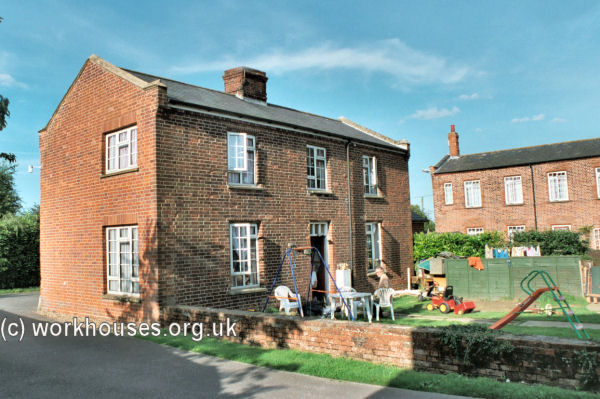
Plomesgate Master's house from the west, 2001.
© Peter Higginbotham.
The workhouse is believed to have been used for Land Army accommodation during the Second World War. In 1948 the property was acquired by the local council and converted to housing.
Staff
Inmates
Records
Note: many repositories impose a closure period of up to 100 years for records identifying individuals. Before travelling a long distance, always check that the records you want to consult will be available.
- Suffolk Archives, The Hold, 131 Fore Street, Ipswich, Suffolk IP4 1LR. Holdings include: Guardians' minute books (1837-1930); Births and deaths (1914-36); Creed register (1926-36); Inmates' property register (1920-35); etc.
Bibliography
- Cockburn, E.P. (1991) The Workhouse, Wickham Market, Suffolk (Privately published)
Links
- None.
Unless otherwise indicated, this page () is copyright Peter Higginbotham. Contents may not be reproduced without permission.


